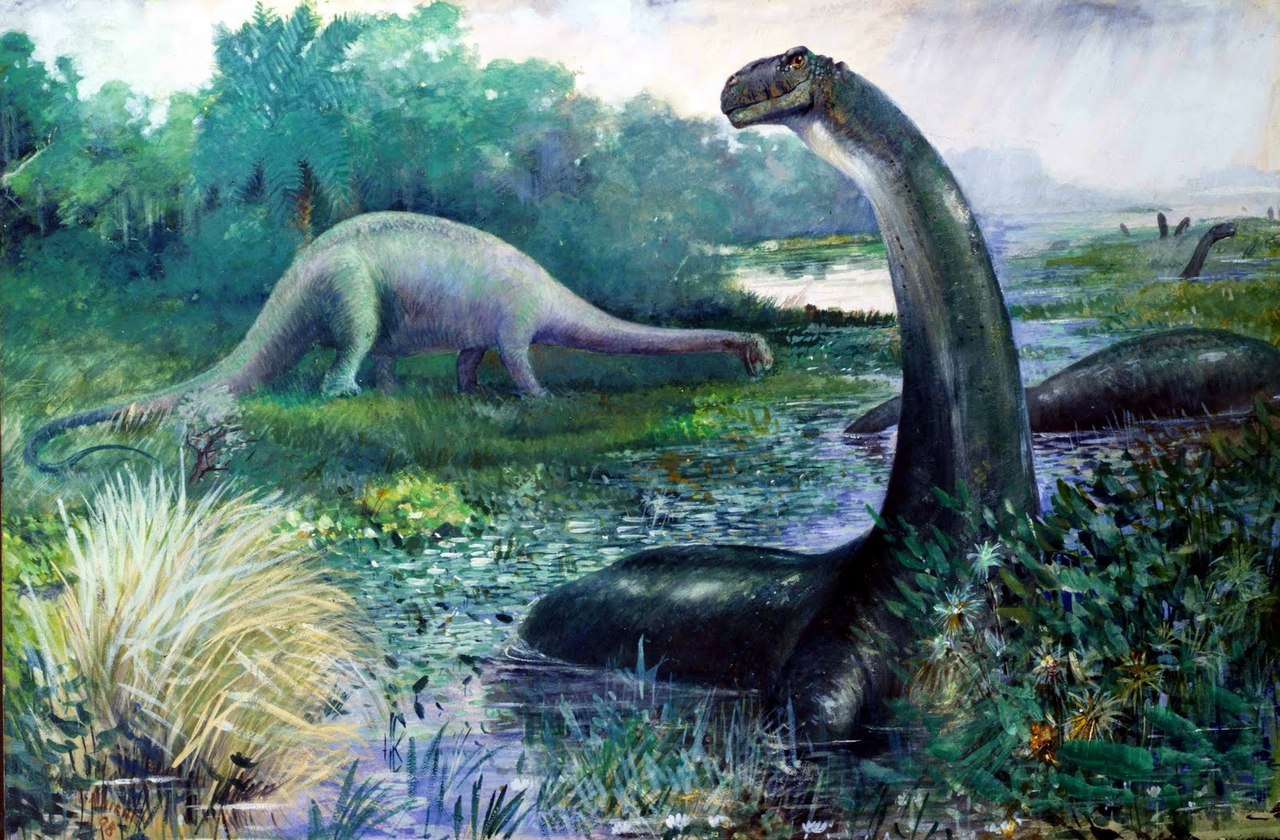Dinosaurs are reptiles. Reptiles are cold-blooded. Birds are dinosaurs. Birds are warm-blooded. When did warm-bloodedness — more accurately referred to as endothermy — evolve? This is a question that has been debated and is rife with controversy for over a century.

An outdated depiction of the way dinosaurs lived, with tail-dragging and restriction to supporting their weight in the water.
The traditional viewpoint was that dinosaurs were giant lizards that lived in swamps in order to support their massive bulk. It was claimed that they grew so large because of erroneous reports of higher oxygen levels during the Mesozoic Era. They were depicted as dragging their tails and being sluggish in general. It was never well understood why mammals, assumed to be fully warm-blooded by this point, were subjugated to being small rodent-like creatures that lived in the shadows of the giant dinosaurs, destined for extinction.
Around the 1970s, Robert Bakker and John Ostrom kick-started what is now called “The Dinosaur Renaissance.” Ostrom described Deinonychus, a raptor I have mentioned before that lived in what is now Montana and that is closely related to Velociraptor. He noted the many similarities to birds, and he revived Thomas Henry Huxley‘s hypothesis that birds were descended from dinosaurs. Bakker, Ostrom’s student, published the book The Dinosaur Heresies in 1986, laying out his hypothesis that dinosaurs were active endotherms, much more similar to birds than to other reptiles. His main reasons were as follows:
1. All modern animals that walk upright are warm-blooded. Dinosaurs walked upright.
2. Both crocodilians and birds have a four-chambered heart like mammals, and this means that dinosaurs also had a four-chambered heart because they are in between crocodilians and birds on the evolutionary tree. Crocodilians are the only animals with a four-chambered heart that are not warm-blooded, and in fact, there is some reason to believe that their ancestors may have been warm-blooded.
3. Dinosaur remains have been found at both the north and south poles where there are remains of mammals but no remains of any cold-blooded animals.
A fossil of the dinosaur Sinosauropteryx, showing fossilized “dinofuzz” all the way from the top of its head, along its back and down its tail.4. Dinosaur bones show evidence of rapid growth, something associated with warm-blooded animals — not cold-blooded ones.
He had other reasons as well, some of which are not generally accepted. Add to these the discovery of “dinofuzz” in a wide range of theropod dinosaurs leading up to the development of birds, and there is some quite convincing evidence that at least some dinosaurs were warm-blooded. It is now very clear that dinosaurs evolved endothermy; the modern controversy is as to just when they did so. Some people, myself included, are of the opinion that endothermy developed before the dinosaurs and that pterosaurs and the ancestors of crocodilians were also warm-blooded. There are others who believe that endothermy only evolved along with flight in birds. Most paleontologists lie somewhere between these two viewpoints. There is an important addendum, however. Even if not all dinosaurs were truly warm-blooded, they would have been “warm-bodied.” This is because the climate was much warmer in the Mesozoic and also because many dinosaurs were so big. As an animal gets larger, it becomes easier to retain heat and more difficult to get rid of it. This is why most large mammals today — such as elephants, hippos and rhinos — have very little body hair. This means that, even if the giant dinosaurs were “cold-blooded,” they’d have maintained a high body temperature simply due to their surroundings and their nature.
I am leaving for New Mexico tomorrow morning, so I won’t be able to post anything until early June. Starting around June 6 or 7, I will begin posting about my trip before I leave for China and Utah on June 21. I hope you all enjoy these posts. I’ll be back soon!
If you missed my first post or any of the others, check out Meet the Paleontologist!
